The Canadian Phycological Culture Collection (CPCC), formerly known as University of Toronto Culture Collection of Algae and Cyanobacteria (UTCC) has been providing service to the international phycological community since 1987.
The CPCC officially began as the University of Toronto Culture Collection of Algae and Cyanobacteria (UTCC) and grew from a small unknown collection of about 65 strains formed by the consolidation of cultures held by Drs. Brian Colman, John Coleman, Czesia Nalewajko, Pamela Stokes and Tom Hutchinson to about 500 strains in 2010. It is the only full-service culture collection of algae in Canada, providing users with cultures, workshops, media and custom-isolation. During the last 25 years the facility has provided cultures to a total of > 1100 users in academic institutions, government and commercial laboratories in approximately 30 countries. Below is the most recent graph showing cumulative number of users since inception.
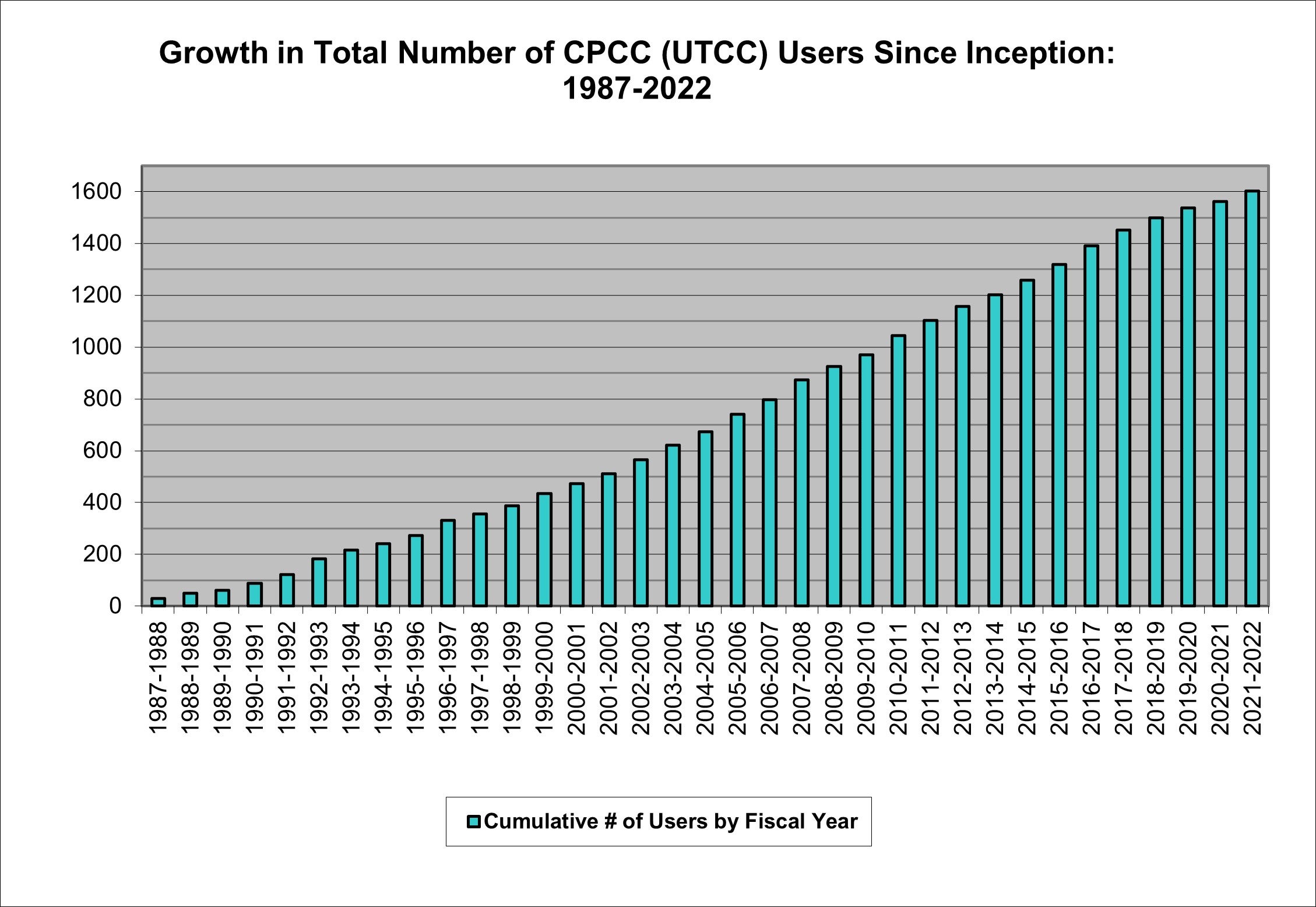
Timeline
1986-1989
The idea of creating the facility was conceived in the spring of 1986 during discussions between Dr. Czesia Nalewajko, Dr. Pamela Stokes and Judy Acreman, who was at that time the Curator of the North East Pacific Culture Collection of Phytoplankton (NEPCC). There was no service culture collection of freshwater microalgae in Canada at the time.
In September, 1986 funds from the Ontario Universities and Colleges Excellence Fund were obtained by Dr. Pamela Stokes, Director of the Institute for Environmental Studies and Dr. John Coleman, Department of Botany in support of the facility. The first Curator, Judy Acreman was hired to set up the lab and begin consolidation of the algae cultures held by researchers at the University of Toronto.
1987 UTCC lab officially opened in the Fitzgerald Microbiology Bldg in January. It became a member (#605) of the World Federation of Culture Collections (WFCC). Curator's office was in the Haultain Building in the Institute for Environmental Studies. We accessioned 65 cultures of algae and cyanobacteria from researchers at University of Toronto and York University. Many of these had been isolated from Ontario lakes. Field collections made and many new strains isolated from soft water lakes in Killarney Park and the Muskoka area of Ontario. The first cultures distributed and our first year revenue was less than $900!
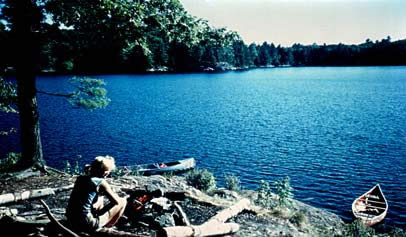
Killarney Park, Ontario
1988 We applied for overly ambitious NSERC funding with Dr. John Coleman as PI but did not receive an award. Reapplied with a pared down budget in 1988 with Dr. Pamela Stokes as PI. Ontario Ministry of Environment funding partially supported the UTCC with grants to Dr. Stokes. We began using Bitnet at the UTCC to communicate electronically with users. Usage was mostly local at U of T with 30 users; users external to U of Toronto reach 20 as researchers became aware of our existence through flyers, articles, radio interview, presentations.
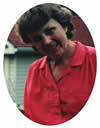
Dr. Pamela Stokes
1989 UTCC moved to new Earth Sciences Centre.
Received first NSERC Infrastructure grant for $16,000 for one year for the operation of UTCC. Director and PI, Pamela Stokes commented it is better than a kick in the pants! Dr. Stokes (Welbourn) took early retirement and Dr. Czesia Nalewajko became the new director. We applied to NSERC for a new 3-year grant together with Drs. B. Colman, J. Coleman, and J. Hellebust.
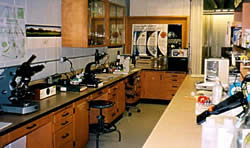
Lab in Earth Sciences Centre
1990-1999
1990 NSERC Infrastructure funding received for 1990-1993 with Dr. Nalewajko as PI and Director. Total number of external users since opening increased to 50 compared to 38 internal users.
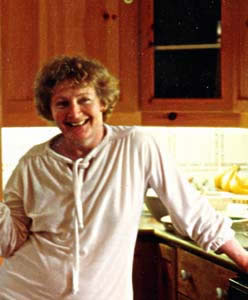
Dr. Czesia Nalewajko
1991 Total number of accessioned strains is now 182; most of these are from environmentally sensitive areas. External usage climbs to 75 users and internal users number 46 in total since opening.
1992 The Advisory Committee consisted of Dr. C. Nalewajko (Director), Drs. J. Coleman, J. Hellebust, D. Kushner (all from University of Toronto) and Dr. B. Colman (York University). New services offered e.g. custom isolation, identification, media preparation. Ontario Ministry of Environment supported the UTCC indirectly through research contracts awarded to Dr. Nalewajko for isolation of new strains of odour-producing algae from Ontario lakes.
1993 We received $23K NSERC Infrastructure funding for 3 years (1993-1996) with Dr. Nalewajko as PI. A major pharmaceutical company in the US did a screening of most of our strains searching for anticancer, antibacterial and antifungal compounds. Two student volunteers helped out at UTCC.
1994 UTCC is now maintaining 258 strains of algae and cyanobacteria, many of which were isolated by the Curator. Total number of users since opening was 237.
1995 We applied in September 1995 to NSERC under the new Major Facilities Access (MFA) program which was to replace the Infrastructure grants program under which >150 facilities were funded. The PI was Dr. Johan Hellebust and co-applicants were Drs. Brian Colman, Czesia Nalewajko and Robert Sheath (University of Guelph). We faced a major challenge as the Department of Botany decided to phase out teaching of Phycology and as well, to close the UTCC unless we were successful in receiving renewed NSERC funding. Two students of Dr. Donn Kushner, Dawn (Xiolei) Jin and Feresteh Hashimi began to rally support for the UTCC through letters to administration at University of Toronto. External review of the UTCC was conducted.
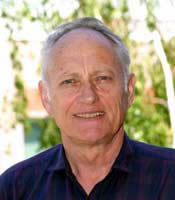
Dr. Johan Hellebust
1996 In March 1996 we were awarded $33,000 funding from NSERC for 3 years. The proposal to fund the UTCC was one of only 44 successful applications to NSERC under the Major Facilities Access (MFA) program. This was a crucial step forward as many Canadian facilities formerly funded under the Infrastructure program were not successful in this competition. We began holding regular annual meetings of the Advisory Committee.
1997 First website for UTCC went online increasing our exposure to the international community. There are 247 external users and 73 internal users since inception of UTCC.
1998 Dr. Johann Hellebust officially retired from University of Toronto and Dr. Robert Sheath became our new Director.
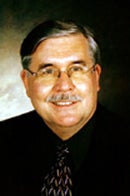
Dr. Robert Sheath
We began hiring students under the OSAP funded University of Toronto Work-Study program to assist at UTCC as the usage increases. The first of a long line of these students was Angie Gonzales pictured below.
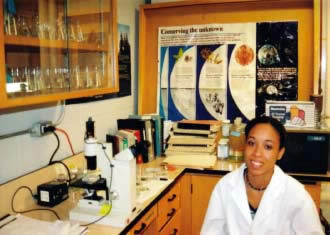
1999 NERSC MFA funding received for 1999-2002 with Dr. Robert Sheath as PI and co-applicants from University of Toronto: Drs. Brian Colman, Roberta Fulthorpe, Johann Hellebust and Czesia Nalewajko
2000-2007
2000 Twenty new isolates from Ontario lakes including phycoerythrin-producing cyanobacteria from under-ice samples were added through isolations in the UTCC lab. See flasks below. Total number of isolates is now around 400. There are 367 external users and 82 internal users since inception of UTCC.
2001 Dr. Sheath left Canada for California State University at San Marcos and Dr. Johann Hellebust became interim Director. Advisory Committee expanded to include Drs. Ralph Smith, and Kirsten Muller from University of Waterloo, Dr. Michael Twiss from Ryerson University and Charles Trick from University of Western Ontario.
2002 NSERC MFA funding of $23K was extended for 2 more years without application. Dr. Susan Watson from University of Calgary and Environment Canada joined the Advisory Committee.
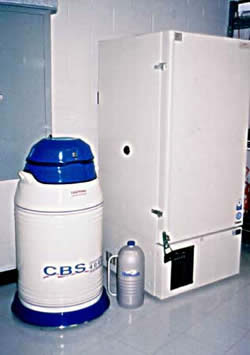
2003 Dr. Brian Colman became Director. Ramez Hanna, a volunteer at UTCC for the summer, did a major revision on our website making it easier to navigate, adding some photos, media formulations, detailed information on ordering, special services and links.
2004 We were again successful in obtaining NSERC support of $40K under the MFA program with Dr. Brian Colman as PI and co-applicants Drs. Roberta Fulthorpe, Stephanie Guildford, Robert Hecky, Kirsten Muller, Ralph Smith, Charles Trick, and Susan Watson. We purchased a liquid Nitrogen storage unit and began cryopreservation.
2005 Four students were hired under the Work-Study program including one who would concentrate on the cryopreservation of our cultures. Number of strains in the collection is now 491.
2006 Achieved good progress with cryopreservation, successfully preserving and reviving 24 strains of microalgae. Roberta Fulthorpe stepped down from the Advisory Committee for UTCC and George Espie (University of Toronto) joined us.
In March 2007 we passed another hurdle in that we were successful in the new Major Resources Support NSERC competition which provides funds only to facilities which could demonstrate a high degree of usage outside the host university. Due to the new criteria for funding the success rate was only 33% (25 out of 76 applications). For the first time we received a 5 year grant ($43, 230) in support of the facility. Dr. Brian Colman was the PI with co-applicants Drs. George Espie, Stephanie Guildford, Robert Hecky, Kirsten Muller, Ralph Smith, Charles Trick, and Susan Watson.
In May 2007, Dr. Hecky stepped down from the Advisory Committee as he will be moving to Wisconsin and in June, Dr. Hélène Cyr (University of Toronto) joined us. Total number of users since inception reaches 809 on June 1, 2007. Annual revenue from distribution of cultures and services accounts for about 45% of the budget.
In 2007 UTCC celebrated 20 years of operation!
2008-2011
In 2008 the UTCC was renamed the Canadian Phycological Culture Centre (CPCC) and was relocated to the University of Waterloo in August. It is now housed in the Biology Department and is under the supervision of Drs. Kirsten Muller and Ralph Smith. The Curator, Judy Acreman retired from University of Toronto and continued to work at UW as Manager of the CPCC on a part time basis. A new Technical Curator, Heather Roshon joined us in August 2008. We continue to serve the international community providing cultures, media, and training in methods of culture and isolation of algae and cyanobacteria.
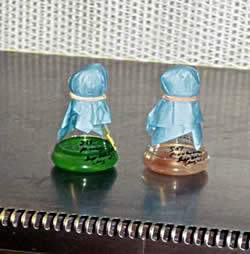
From 2008-2010 the CPCC continued to provide cultures and related services and successfully met the challenges of making the transition from University of Toronto to University of Waterloo. Under the guidance of Drs. Brian Colman and Kirsten Muller together with the Advisory Committee the CPCC continues to be a valuable service culture collection of algae and cyanobacteria, adding new users on a regular basis.
In October 2010, Judy Acreman retired after 24 years of dedicated service with the UTCC as Curator and with CPCC as Manager. She managed a successful move of the facility from University of Toronto to University of Waterloo in 2008 and continued to work part-time at the CPCC until 2010 to complete the transition and train her replacement, Heather Roshon. Judy remains involved in the CPCC as a member of the Advisory Committee. On occasion, she may also be available on a part-time contracting basis for special services related to consultation, isolation, purification and cryopreservation of algae and cyanobacteria so that the staff and customers of CPCC may continue to benefit from her knowledge.
2012
Canada’s Economic Action Plan 2012 resulted in a moratorium being placed upon the NSERC Major Resource Support (MRS) grant, and therefore, our proposal for further funding was declined. As a result of prior NSERC financial support, we were able to provide significant discounts for non-profit users. With the loss of this funding from the Canadian Federal Government, the CPCC is currently relying solely upon user fees for revenue and finds it necessary to raise our fees slightly for non-profit users. New avenues of support are being explored.
Directors of UTCC (1987-present)
- Dr. Pamela Stokes (Welbourn) 1987-1989
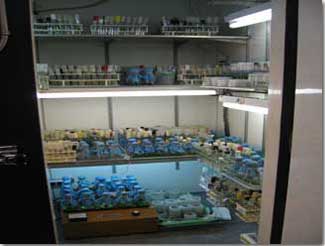
- Czesia Nalewajko 1989-1995
- Johann Hellebust 1996-1998 and 2001-2003
- Robert Sheath 1998-2001
- Brian Colman 2003-2019
- Kirsten Muller, Associate Director 2008-2019
- Kirsten Muller, co-Director 2019-present
- Monica Emelko, co-Director 2019-present
Curators of UTCC and CPCC (1987-present)
- Judy Acreman 1986-2008 (Manager from 2008-2010)
- Heather Roshon 2008-present
Technicians, work-study students and volunteers at UTCC (1987-2008)
- Kathie Hodge
- Needa Peef
- Florence Dharmarajah
- Katrine Doig-Kordbacheh
- Angie Gonzales
- Julia Kuzmina
- Beverly Francis
- Johanna Sanchez
- Ramez Hanna
- Vanessa Blandford
- Evelyn Lu
- Grace Chung
- Carmen Chung
- Justyna Bartoszko
- Fereshteh Hashemi
- Dawn Jin
- Annepa Anton
- Anoja Anton
- Majid Khayatian
- Beata Kluczyk
- Kay Chen
- Siobhan Tobin
- Krista Thomas
- Julie Vandenbyllardt
- Erin Wee
- Kathy Zhou
- Christina Panaram
- Jaymini Kamat
Technicians: work-study, casual and volunteer at CPCC (2008- ):
- Michelle Kutlesa
- Stacey Kerr
- Harmanpreet Kaur
- Navdeep Pandher
- Giovanna Wu
- Saliy Shaker
- Rohini Bagchi
- Maiuri Visayanathan
- Kelsey Dexter
- Kristen Kalbfleisch
- Nicole Lassel
- Jade Chan
- Yaryna Kudla
- Christina Do
- Estella Crosby
- Joonyoung (Andy) Kim
- Sarah Tucker
- Daniel Hsia
- Kathleen Farrugia
- Josmar Alas
- Nivedita Sharma
- Andrei Anghel
- Jessica Dunkley
- Ahmad Qureshi
- Melodie Lee
- Fatima Shakil
- Joel Kim
- Concesa Clohissey
- Brittany Gunpat
- Arnold Kwok
- Irda Zahra
- Gun-Hee (David) Cho
- Akilah Laidley
- Marie Chiang
- Joseph Alagia
- Yara Alhamad
- Nisha Cithravel
- Ronak Saluja
- Thiviya Kanagasabesan
- Abirna Kadambamoorthy
- Jenisse German
- Reisha Fernandes
- Sandy Feng
- Ashvini Yogarajah
- Linda Chan
- Jessica Tan
- Nathalie Balbontin
- Saaliha Jivraj
- Oindrilla Ghosh
High school co-op students at CPCC (September 2012-Present):
- Yun-Ling Lin
- Hannah Stolee
- Benjamin Pelrah
- Brandon Singh
- Christina Do
- Graeme Smith
- Alex Vergados